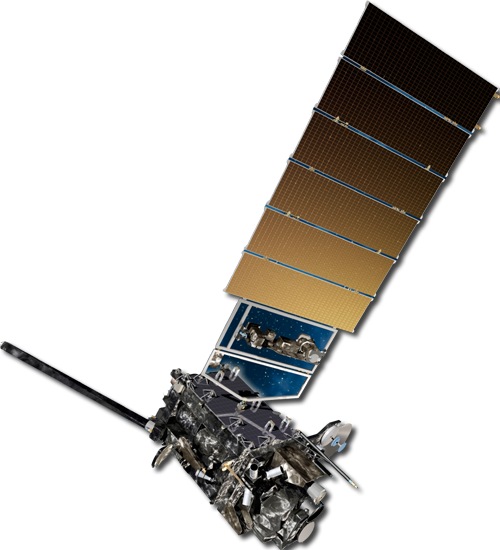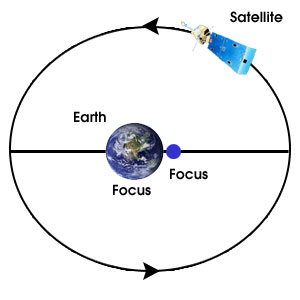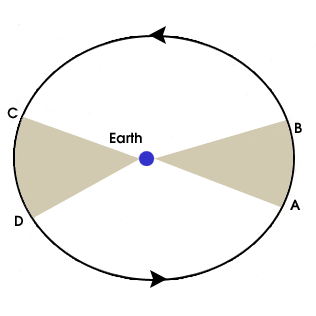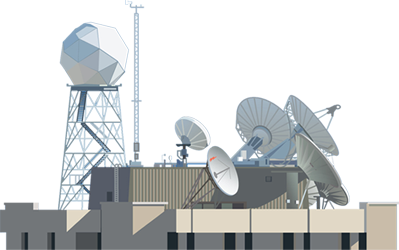Weather Satellites and Orbits

Math and Physics Behind Satellite Technology
Kepler's Laws of Motion
The motion of a satellite around earth is defined by Kepler's Laws of Motion. So, to better understand the GOES and POES observations, we need to review these laws. The physics of any object in orbit about a more massive body is best explained by Kepler's laws of motion. These laws are true for any orbit: a planet orbiting a star, a moon orbiting a planet, or an artificial satellite orbiting the Earth.
1. The path of the object will be an ellipse, with the massive body at one focus
 |
An ellipse is a closed, curved shape that looks like a flattened
circle. An ellipse contains two foci and the sum of the distances to the foci from
any point on the ellipse is a constant. The Earth occupies one focus of the ellipse, not the center. |
2. A straight line joining the central body and the orbiting body will sweep out equal areas in equal times
 |
Satellites do not orbit at a constant speed -- they speed up and
slow down. The time between points A and B is the same as the time between points
C and D. The areas of the two wedges are the same. Does this work for earth's orbit? Count the number of days between September 21 (Autumn Equinox) and March 21 (Spring Equinox) and the number of days between March 21 and September 21. |
3. The square of a planet's year always equals some multiple of the cube of the planet's distance from the sun
P²=a³
P is the orbital period in Earth years
a is the length of the semi-major axis (average distance from the Sun) in Astronomical
Units.
This means that if you know how much time a planet's orbit around the Sun takes, you can know it's average distance from the Sun, or vice-versa!
| 10 / 11 |





